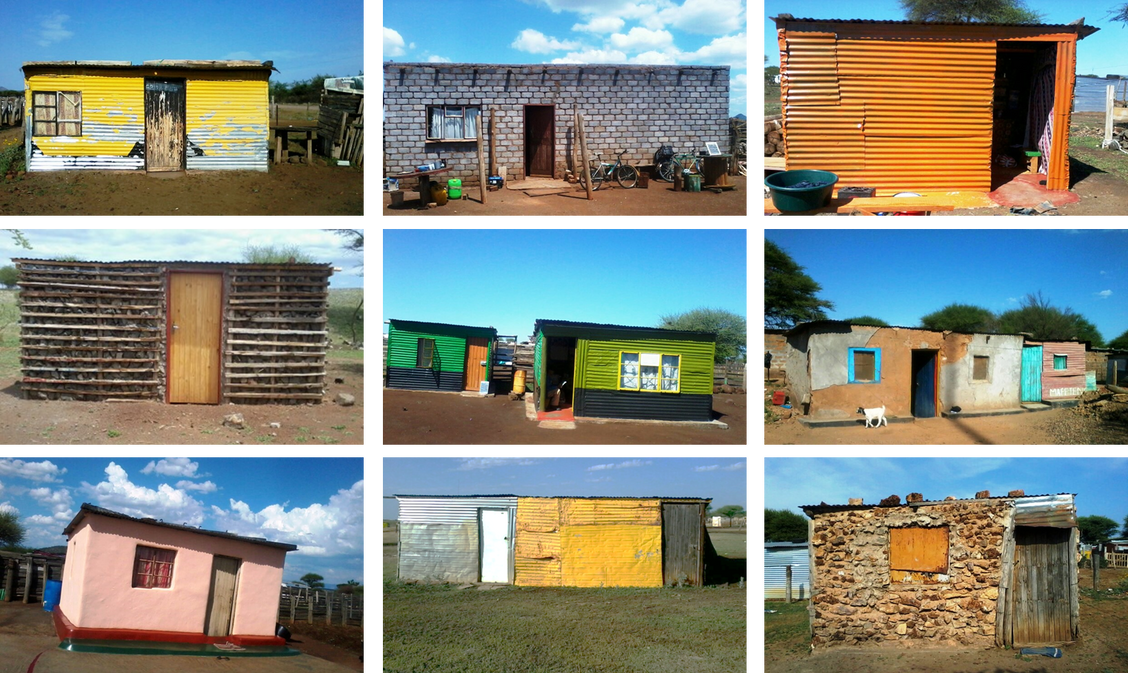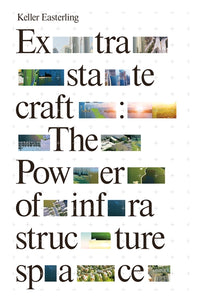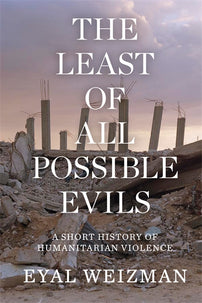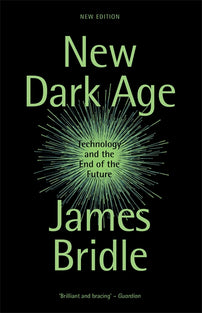Things that do not go bang in the night
AbdouMaliq Simone offers some reflections on Keller Easterling’s Medium Design and wonders how we might rethink the process of design - urban, social, political - from within the middle of things.

Here is a book that embodies what it proposes, “it might not work.” In fact, the value of the incitements and guidance in Medium Design is that it does not worry about its prospective “failures”; it takes the chance of positing a range of maneuvers specifically addressing a temporality of the “maybe”. Maybe particular preparations and tactics will see you through, maybe they won’t, but there is no way of knowing in advance of the actual attempts, and only in such attempts does one learn the know how about not only how to learn but to know how to use that learning in situations where there are no guarantees. As such Easterling provides us with ways of doing something now, right here, wherever that here is and whatever conditions inform it. Without the enduring capacities to put things into play, we are left being incessantly put into play, seduced and abandoned on the outskirts of town parading as a new frontier. Not dissimilarly, in determinations to hunt down the enemies we hold culpable for our uncertainties and misery, we are overly anchored to the traps we attempt to set, rather than perceiving whatever we have available as a lure to work with, even if all we might have are a plurality of problems. This is what Easterling calls working with a “history of things that do not happen.”
Despite better instincts and analytical skills, many of us too easily slip into treating the urban as some kind of unfolding and definitive logic, some coherent apparatus of spatial production infused with a set of capitalist axiomatics and ideological infusions. We forget what urbanization does, and how it does it. Whatever imaginations of systemic coherence we might impose, urbanization is more about articulation as a means of generating spaciousness than anything else. It is about a continuous processes of undoing and redoing, of intersecting things despite their geographic or temporal positioning and constituting new things from that which is intersected and undone.
Such a process does not mean that things don’t get sedimented, that they don’t accrete layers and layers of undifferentiated repetitions that exert gravitational pulls that effect the rhythmic potentials of change or consolidate into baselines that seem to sum up all that came before and thus point in only certain limited directions for what is to come. But even in this apparent stalwartness, all of the dirty work, all of the silent improvisations and adjustments that have to take place in order to maintain the image of coherence are too often occluded, swept under the carpet. What Easterling does in Medium Design is to return to the messy world of work-arounds, recalibrations, and deal-making that is at work in producing the systemic character of these urban articulations and intersections. All of the noise in the programming and governmentalities that seemingly characterize urban entities—whether they be towns, cities, regions, peripheries.
The urban as the manifold locus of modernity has expressed the potency of human will to shape the actions of humans and materials alike. Yet the implications of such potency have substantially diminished the efficacies of the urban even as it would appear to voluminously expand in all directions. As Franco Berardi emphasizes, the rescaling of salient force to the level of planetary climate conditions and to the micro-registers of biomes, toxins, and viruses—registers which are increasingly articulated through techno-semiotic calculation—constricts the operations of politics as a means of constituting “free citizens” long affiliated with the city. As such, new maneuver of interplays within and among registers are needed as a means of multiplying entanglements among things, the relations of mutual implication, and the directionalities of collisions beyond the specifications of algorithmic determinism.
At the heart of Medium Design’s strategic reflections is the importance of valuation through re-arrangements, rather than abstracted calculations. Re-arrangements among densities, uses, durations, affordances, and collective socialization. It is not about knowing what is to be re-arranged, but how. This is because arrangements become visible only as they shift over time, when their stagecraft becomes apparent, the taking-to-the-stage of specific constellations of assessment, brokerage, mutual attentiveness, provisional rules, and collaborative practice.
For example, when the implicit governance systems of migrant hostels no longer have a basis in the subsidies and salaries paid out by formal employers and have to shift to new arrangements of resources, social connections, livelihoods, and social identities. Place-based arrangements may be converted to more transversal collaborations; the application of specific lenses of institutional readings of given contexts may necessitate readjustments in the ways in which resources are allocated and adjudicated. Household functions may be redistributed across multiple locations, where a single address serves more the pragmatic function of having an address than representing a coherent household unit. The operations within local markets might shift from specific jobs being the purview of particular identities to a proportion of all jobs being allocated to a cross-section of identities. Value here rests in the shift or switch, where the dispositions of a particular way of doing something unexpectedly suggest new implications, desires, and practices. It is a matter of taking those aspects of a problem that stand for (or against) the intensity of crisis and resituate them as integral elements of a different arrangement and thus connotation without necessarily depreciating their formal role. The task is to go from sides to sidelines; having something on the side; something besides, right to next to, whatever is going on.
From the boundaries of a nomos to the demarcated territories of psychic interiors, from the declarative sentences of “this is who I/we are” to the boundary maintenance of sectors and institutions, from the specifications of the financial asset to the planetary wholeness of Gaia, the tropes of coherence, of clear designated “sides”, or the resolutions of the dialectical obscure the process of being in the middle of things. And it is in the middle that urbanizing takes place, displaces, and replaces. So Easterling operationalizes this middle for urbanists who can’t afford either distance from or a pause in the action of urbanizing processes that never take a vacation. In doing so, she draws upon a well-known cast of characters who have addressed the dynamic interplays of things that both constitute and occur in that middle—those who have described dispositions, affordances, lively matter, assemblages, and entanglements. Folks like Ryle, Gibson, Deleuze and Guattari, Bateson, Bennett, Foucault, and Povinelli.
Perhaps more importantly, and without having to do so explicitly, she revalorizes and repurposes the strategic wisdoms of those for whom the middle was more than abstract positionality. This middle is particularly salient historically for people who found themselves in the middle of things without their consent. From the middle passage to being slap dab in the middle of defining commodification while being in the middle of soul wrenching labor, Black people, supposedly consigned to the margins of humanness, political power, and history making, found themselves in the middle of all of the important economic action without being on anyone’s side or on the sidelines despite appearances.
While revolt, fugitivity, resistance, and mobilization have always been essential tools in Black struggles for liberation, they could not always be deployed in a process that demanded continuous, uninterrupted action in response to the structural conundrums that Black people found (and were demanded to lose) themselves. If rendered ineligible for humanity and consigned to flesh, then in what ways did notions of flesh facilitate the extensionality of Black life in, through and across intricate ecologies with land, forests, swamps, animals, and cities, If declarations of identity and intent were incessant invitations for slave patrols, then how could invocations and calls be issued that served as lures for collaboration, as markers of collective operations across spaces and times that didn’t rely upon the materialization of a “body”, or organization. From a wide range of diverse Black “theoreticians”, from Nathaniel Mackey, Denise Ferreira da Silva, Iceberg Slim, Saidiya Hartman, Dionne Brand, Fred Moten, Chester Himes, and Octavia Butler to name a few, the active absence of consent to either being a single being, possessing a single deck of cards, or of depending upon specific displays of competencies as indicators of self-worth were key aspects of the political toolbox of Black folk.
Medium design also resonates with one of the key spatial logics of the African Sahel, bilad al-siba, which points simultaneously to a space that is not addressable in any stable vernacular, a space of disorder and illegitimacy, unsettled and disconnected, as well as a practice of living at the enemy’s expense. In other words, a space always in the making whose dispositions were utterly contingent upon the elements of composition attaining an anonymity by constantly “changing sides”, and by doing so, obscuring the entire notion of “sides.” Far from the rendering farms which turn out high resolution fractals of formulaic built environments, questions of rendering were long at the heart of “peripheral” Sahelian worlds, of the constantly shifting assemblages of collective identity among people with only tentative anchorage in the familiar tropes of kinship, ethnicity, territory. Where the “affinal” is based, not on reciprocal exchange or common belonging, but on raiding, stealth, exorbitant displays, transgressive expenditure, simulation, “strange” alliances, and transmutations with spirits, ghosts, and djinn. Here the question is how the figure of the collective is continuously reworked with the materials at hand. Often displaying “fixity” as a ruse. Not dissimilarly, the Islamic notion of hijra is the cultivation of a transformative event, a volitional suspension of the rules, the making temporary all that seems definitive. Hijra means being exposed to the world, not as an established, pre-fixed geography, but as something in motion, just as the earth, with its tectonic shifts constantly rearranges itself. It is exposure to the movements of the world as that which is familiar defamiliarizes itself and finds new forms and venues of recognition. Medium Design finds itself, perhaps, unwittingly, within a long-term design tradition.
What does it mean to act from the middle? Far from a position of stabilization, of balancing out bookended extremes, the middle finds itself incessantly undermined as stabilized terrain and rather “finds” itself, conversely, as a medium of unsettlement. Look at all the global middle classes who, having evacuated the rough and tumble communalisms of the street in favor of disciplined adherence to performances of respectability, must assume greater levels of indebtedness in order to stay in place—a place which is going nowhere. All intensifications of the declarative, that epistemological maneuver that attempts to settle matters once and for all, to pin things down, no longer provide the guarantees for an ongoing existence, which was their legitimation. From interoperable data to algorithmic determinations of definitive positions within shifting combinations of variables, from the logistical maximizing of value to the droned zeroing in on any target, the impetus to define, settle, and circumscribe both ironically and cruelly unsettle anchorage, location, and confidence. As urban residents change houses at rates close to changing clothes, where households spread out across multiple locations, where residents are incessantly in motion attempting to seize opportunities or avoid being seized by bad decisions and excessive obligations, an unsettling of inhabitation coincides with an intensifying dread that no matter what gets done it will be insufficient to ensure any kind of future. Politics as an incessant struggle over the terms, priorities, and privileges of life becomes a laughable exercise when life itself is clearly heading out the door. What does it mean then to act from the middle of such turbulence, where the proficiencies to categorize and contain across more expansive registers—from the nanoscales to planetary ones—exhausts the very reservoirs of those non-probable, incomputable, chance, and virtual relations that propel invention and ward off atrophy.
Easterling employs a wide range of examples to demonstrate how incremental maneuvers might leverage an expanding field of interplays among life activities and built environments that fall outside of formalized markets of exchange. Community toilet construction becomes a locus to re-arrange relations among gender security, housing, material and social power. Social capital credits link various essential caring and providing activities into a local non-monetized economy. While the actual implementations of these inter-plays may have generated problems that were not able to serve as a basis of further inter-plays, and instead devolved into debilitating inefficiency, their failures nevertheless did not deter participants from trying to reverse-engineer the situations they were left with. Again, as Easterling emphasizes, this is not a story of solutions or eventualities, but an ongoing approach for architects, planners, activists, technocrats, and politicians to demonstrate reciprocal trying on each other for size, friendships with benefits, playing “footsies” under the tables of apparent solidity. If sometimes the maneuvers Easterling posits seem to operate on their own, with the power of their own gamesmanship, it is also important to emphasize the sensuality, the rudimentary protocols of lures and desires, of seduction that would be necessary accoutrements to actually doing the designing and implementing the designs.
For today’s conditions of generic instability point to the ways in which protracted histories of practice-- through which the details of how the material and technical bases of cities have been articulated, disjoined, converted, juxtaposed, and amalgamated in both parallel and intersecting vectors of force-- no longer are capable of holding the city together nor of being rejiggered and readapted to increasingly volatile atmospheres—climatic, financial, political.
The specificities of materials, actors, and technicities are not constellated into patterns or evidence of macro-structural maneuvers. They figure their own alliances. Strange relations are being “designed” anyway, and what is important is not to try and settle things down, but to move with them, and learn how to modestly, without grand expectations, to turn or steer them into specific possibilities that often only accidentally present themselves. So it is not so much that Easterling is rolling out a bunch of smart design tricks to outsmart our calcified politics, but rather how to think and act from starting anywhere and the implications that has for being entangled in messy complicities among things usually taken as antagonists, distances, and, counterfactuals. The kinds of potential dispositions and scenarios Easterling asks us to consider are already present in the conditions and crises we ascertain, and so this is a less a matter of the architect’s invention, than in a willingness and skill to engage what might indeed be operative already, obviating the investment in defending against something that is yet to come.
There are going to be people who feel that Easterling plays too coyly with politics; that she is off to the side barely concealing an ironic smirk. Even though she continuously makes clear that she does not downplay the severity of the precarious conditions differentially and unequally experienced. Problems may be useful resources for academics but they can be overbearing to those who despite their tactical wisdom see no way out from under them. But across the landscape of new municipalism increasingly gaining traction across the world’s cities, councilors, planner, and activists are conjointly trying to game the systems they inherit to work out at least provisional pathways to enhanced equity and access. While pursuing purportedly progressive policies to rewrite the economic and political substrates of urban rule, they also know that the fiscal constraints and the existent socio-spatial wiring of urban material flows requires immediate refiguration within the framework of existent resource affordances. The pragmatics of urban politics as a continuous process of daily work-arounds, tactical openings, sleights of institutional hands is the stuff of today’s progressive urban practice, and what Easterling does, at its simplest, is to provide creative conceptual and technical support.
What may be more salient caution here is that further work is (always) needed to think through the relations between the urgency for revolt and the practically indeterminate and sly interventions into fluid political chemistries whose exertions of force can be slippery and impervious to obvious detection. For example, the significant enlivening of feminism in Latin America during the past two years, expressed through the continuous feminist general strike, asserts the importance of “destituent desire”, i.e. the capacity to say “no”, no to every dimension of state violence, to every hegemonic form of managing social reproduction and precarity.
This “no” is the predication of the capacity to bring new things to life, not simply as an abstract negation, but as the active enunciation of a collective in the making. The general strike is an active withdrawal of implicit confirmation, a refusal to go along with the program, even with the prolongation of life taken as a value that outweighs the end of patriarchy or state terror. For urban inhabitants who have long relied upon everyday antagonisms in situated encounters with powers whose seemingly arbitrary distribution made it difficult to generate the most elemental plans for a tomorrow, narratives without conflict, at the heart of Medium Design, may appear as just another apparatus to dilute their capacity. No matter how much strategic wisdom such design might offer, the destituent desire of the poor, far from representing any ideological purity or cultural programming, is the only mechanism for them to insert themselves in the middle of things.
To design from the middle, in the middle of things, must then incessantly be on the outlook, and indeed supportive, of these maneuvers to upend capitalist geographies, and how hands might be lent across the shifting, interplaying grounds of revolt, dissimulation, interplay, and opacity. Easterling clearly realizes that this is the challenge. Afterall, there are no final moves here, just an open invitation to keep on moving.
[book-strip index="1" style="display"]




